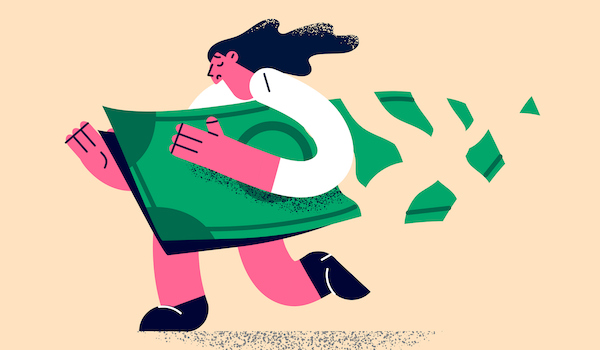Over the past several years, I’ve talked both in the articles that appear on my website and in person with clients about the importance of focusing on personal long-term goals. I’ve also stressed the need to filter out noise from the media about the latest economic and political news. And I’ve shown how it’s often easy to be seduced into straying from well-thought-out investment strategies.
A few weeks ago, an article in The Wall Street Journal caught my eye because it highlighted these same points.
The article, “The Biggest Day In Bonds That No One Noticed”(The Wall Street Journal, October 1, 2021), looked back 40 years ago to September 30, 1981. If you’re part of the Baby Boom generation or older, you will remember that interest rates then had been steadily climbing for years. The overall impression of most rate watchers and the investing public had at the time was that rates would continue to climb.
On that day, September 30, 1981, you could have bought investment grade mortgage bonds with a yield of 18.75% per year for 20 years, says the above Journal article. Think about that for a moment. Being paid almost 19% for 20 years in a highly rated, low-risk investment. If a bond offer existed like that today it would be snapped up before the ink was dry.
But guess what? At the time, those mortgage bonds did not sell out their offer.
Investors were willing to pass on bonds with a yield of 18.75% per year for 20 years.
Why? Investors were convinced if they waited the offer would get even better. Everyone just knew rates would continue to rise so why lock up money at 18.75% when they were convinced a better deal would come.
If you can recall that time of rapidly raising interest rates, you know what happened next. It turned out that interest rates, and therefore bond yields, peaked on September 30, 1981, the day those mortgage bonds were offered, says the above cited Journal article. Over the next six days, yields dropped a full percentage point. By Thanksgiving, they were below 13%, the same Journal article adds. It was one of the sharpest interest rate declines in history. Interest rates, and inflation, began a decades long decline.
Emotion. Let’s call it greed. The “certainty” that interest rates would continue to rise caused investors to miss out on the best bond investment of all-time.
And today, we’re seeing an increase in inflation, and the Federal Reserve has made known its intent to allow interest rates to rise.
- Does this mean the long-term investment plans we’ve developed for you are no good anymore?
- Do we need to rethink everything we’re doing?
Hardly! Here’s some background on why. Let’s look at what’s behind the rise in inflation and why the Fed wants to control it.
Inflation’s ebbs and flows
There are a multitude of factors that contribute to inflation. But at its core, inflation is driven by sustained demand and limited supply.
With the pandemic, we’re seeing that people want to buy more stuff just when manufacturers are having a difficult time providing stuff to buy. It’s the classic economic talking point of supply and demand. When there’s too much supply and not enough demand, interest rates and inflation fall. When the opposite situation exists, as it does now, rates and inflation begin to climb.
Not that all inflation is bad. Quite the opposite, in fact. Inflation is ultimately the rising cost of goods and services. This requires strong consumer demand and is usually indicative of an accelerating economy. This is a good thing until the economy and inflation accelerate too fast.
You’ve heard the expression, the Goldilocks economy. That’s where there’s just enough demand to keep the economy strong, but not so much as to create excessive inflation. That’s the sweet spot that the Fed likes the economy to be in. And it’s why the Fed has said it will allow interest rates to start rising so borrowing becomes more expensive. The idea is to gently slow demand down but not to squash it.
For the last 20 years, inflationary pressures have largely been mitigated by deflationary forces such as globalization and technology. Thus, the Federal Reserve has been able to maintain historically low interest rates.
One of the key questions right now is whether inflation will rise long term or not. Much depends on the pandemic and its impact on manufacturing.
- If the supply of products continues to fall because manufacturers can’t get enough raw materials and labor to produce goods, then it’s very likely inflation will continue.
- If however the opposite happens, then it’s very reasonable to assume prices will drop.
It’s impossible to know what’s going to happen. That means there are a couple of paths we can follow. We can guess at what we think will happen, and we may be right. Then again, we may be wrong.
Guessing is like flipping a coin, and that’s not the way you want to make decisions about your financial future.
The other option is to stay on top of things by continuously monitoring the lay of the land. As we see things developing and their impact on you we can make adjustments as needed.
What am I paying attention to?
Here are examples of what I am watching:
- Corporate earnings. The truth is that some inflation is good for our economy as mentioned above. Rising costs of goods and services, at a certain point, translates into more revenue for Corporate America. Inflation only becomes a problem when Corporate America can no longer pass on rising costs to the consumer.
- Consumer expenditures. So far, the consumer has shown a willingness to digest higher prices. In the near term, that’s good for corporate earnings and the stock market.
- Yield curve. One consistent recession indicator is an inversion of the yield curve — when the 2-year Treasury yield is higher than the 10-year Treasury yield. This inversion indicates lower than expected future growth. Today, the yield curve is far from inverted with 10-year Treasury yields minus 2-year Treasury yields in positive territory, according to Federal Reserve Bank of St. Louis.
- Rising interest rates. The potential for increasing interest rates comes with inflationary pressures. And clearly, there are inflationary pressures out there as discussed earlier.
- Wall Street chatter. If we were to rewind the clock to the beginning of the year, you had 95% of the analysts on Wall Street saying inflationary pressures would be transitory, the result of supply chain disruptions. Today, only 50% those same analysts say inflation is transitory; 25% say inflation will be here for some time.
Steps you should take
I believe you can get through these changing times by maintaining your investment discipline. Stick to your investment plan unless something comes along to necessitate change. That will help prevent fear or greed from overruling rational decisions.
Remember that no one knew that September 30, 1981, would be the turning point in bond yields. Even today, 40 years later, nobody has a clear explanation as to why this happened. The inescapable lesson of September 30, 1981, is that markets can keep moving in the same direction longer than anyone can imagine AND THEN, UNEXPECTEDLY, SHOOT IN THE OPPOSITE DIRECTION due to forces no one fully understands.
Remember, too, the while inflation can be painful, modest inflationary pressure can be good for the economy — and your portfolios. Interest rates can’t remain too low for too long because people demand decent yields from their bond investments.
As I’ve said many times before and no doubt will say many times in the future, our relationship is collaboration. Ongoing conversations are a better way for us to work through uncertainty. Let’s keep talking.


